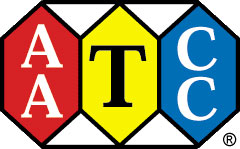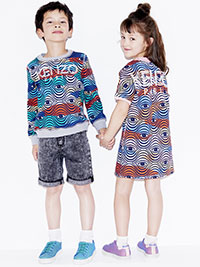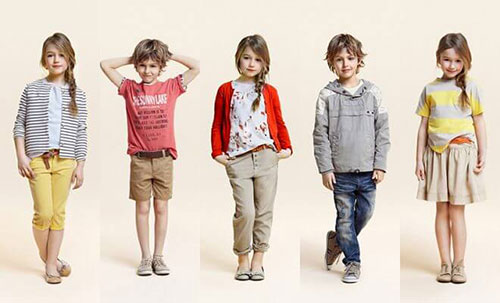FW
Bringing together over 1,200 collections under one roof at the NEC Birmingham, Moda, a Hyve Group plc event, will deliver the complete season's overview to over 9,000 fashion buyers. The show will bring fashion to life with 16 catwalk shows across the three days from February 23-25, 2019 to inspire buyers and sell brands, alongside a comprehensive retail-focused seminar programme, interactive workshops and networking events.
Visitors can expect to see a compelling line-up offering newness and industry favourites, with brands such as Caprice, Tamaris, Xti, Refresh, Carvela, UNISA, Peter Kaiser, Alpe, Fly London, Nero Giardini, Marco Tozzi, Keddo, S Oliver, Jana, Lunar, LOTUS, Ravel, EMU Australia, Shepherds Of Sweden, IGI, MUSTANG, Blowfish, MODA in Pelle, HB Shoes, Vionic, etc.
Lisa Govier, Footwear Director at Moda says: “The Moda team has worked incredibly hard to create the right environment for footwear brands this season and we are over the moon to announce a roll call of over 100 brands coming together at Moda, offering the most exciting, efficient and effective buying platform for visitors. Our dedicated buyer acquisition team will now help facilitate introductions between brands and retailers to deliver superb ROI for our exhibitors whilst also introducing buyers to exciting new brands that may not be on their radar, via our speed-networking programme.”
Hyve Group plc is a next generation global events business whose purpose is to create unmissable events, where customers from all corners of the globe share extraordinary moments and shape industry innovation. The group aims to create the world’s leading portfolio of content-driven, must-attend events delivering an outstanding experience and ROI for its customers.
"AATCC, headquartered in Research Triangle Park, N.C., USA, provides test method development, quality control materials, and professional networking for members in about 50 countries throughout the world."
 Two undergraduate scholars will present their latest research to the Concept 2 Consumer Interest Group during AATCC’s committee meetings on Wednesday, November 13, 2019.
Two undergraduate scholars will present their latest research to the Concept 2 Consumer Interest Group during AATCC’s committee meetings on Wednesday, November 13, 2019.
Michelle Kerstein, Senior at North Carolina State University Wilson College of Textiles, majoring in Fashion and Textile Management, will present her research on consumers and the circular economy. Kerstein is a recipient of AATCC Foundation Darsey Family Scholarship. She will discuss her latest findings on the increased awareness that consumers have on the negative impacts of the textile and apparel industries. Kerstein will be discussing how manufacturers and retailers need to work with and engaging consumer base by supporting models that increase clothing use, clothing swaps, clothing rentals, and the secondhand market. She will also discuss how companies can invest in safe and renewable materials that excite consumers and discover solutions that turn used clothes into new-like textile recycling and upcycling.
Reannan Riedy, Senior Retail Entrepreneurship student in the Jim Moran College of Entrepreneurship at Florida State University will present her undergraduate research on phase change materials (PCMs) at the fall committee meetings. Riedy has been a member of Dr. Meredith McQuerry’s research team in the FSU Textile Testing Laboratory since 2017. She has presented her research findings at the International Textile and Apparel Association Conference, the National Fire Protection Association Conference, and the AATCC International Conference. Her recent work to develop a simple, valid, and feasible methodology for quantifying the presence of PCMs on a textile material’s surface will be presented. Riedy will discuss the latest findings in a laundering durability study that she conducted to determine the useful life of a proprietary, micro-encapsulated active cooling and technology finish segment.
AATCC, headquartered in Research Triangle Park, N.C., USA, provides test method development, quality control materials, and professional networking for members in about 50 countries throughout the world.
Adidas expects its sales to increase at a rate of between 5 percent and 8percent on a currency-neutral basis in 2019 with significant sequential top-line acceleration during the fourth quarter. The company’s gross margin is forecast to increase to a level of around 52.0 percent in 2019. The operating margin is expected to increase between 0.5 percentage points and 0.7 percentage points to a level between 11.3 percent and 11.5 percent.
In the third quarter, the company’s currency-neutral revenue grew by 6 percent. This improvement reflects high-single-digit growth in Sports Performance, driven by increases in the training, running and outdoor categories. Its gross margin increased by 0.3 percentage points to 52.1 percent (2018: 51.8 percent). The brand’s net income from continuing operations decreased by 2 per cent to € 644 million. It’s revenues in the first nine months of 2019, increased by 5 percent on a currency-neutral basis.
"Natalie Kotlyar, Leader of BDO’s national retail and consumer products practice, believes as the US birth rate has been relatively stable this year, children’s apparel market has been stagnant. BDO expects e-commerce and big-box retail to capture the majority of children’s apparel sales, as consumers strapped for time–especially those with young children–are looking for the most convenient options: shopping on-the-go or at one-stop shops"
 Kids wear market has got a major fillip with numerous apparel brands expanding into the children’s market. This includes brands like Rent the Runway which launched a kid’s wear range earlier this year; Stitch Fix also launched a kid’s subscription box last year while Brooks Brothers is planning to launch new infant wear collection. Indeed kid’s wear category is thus gaining more attention than usual from brands of late.
Kids wear market has got a major fillip with numerous apparel brands expanding into the children’s market. This includes brands like Rent the Runway which launched a kid’s wear range earlier this year; Stitch Fix also launched a kid’s subscription box last year while Brooks Brothers is planning to launch new infant wear collection. Indeed kid’s wear category is thus gaining more attention than usual from brands of late.
Kid’s apparel’s business is highly competitive as nothing sells at full price. The business belongs to the buy-now-wear-now category as it relies heavily on the weather. People do not buy kid’s clothes in advance due to changing sizes. This poses a huge challenge for brands that are always looking to grow. Secondly, the labor required on the kid’s apparel – the work for a girls dress is the same as an adult dress, and there’s no break on labor costs because it’s a smaller item.
Kid’s wear to grow despite recession
Natalie Kotlyar, Leader of BDO’s national retail and consumer products practice, believes as the US birth rate has been relatively stable this year, children’s apparel market has been stagnant. BDO expects e-commerce and big-box retail to capture the majority of children’s apparel sales, as consumers strapped for time–especially those with young children–are looking for the most convenient options: shopping on-the-go or at one-stop shops
One big retailer that seems poised to capture a majority of the kid’s market share is Target, which launched its private-label line Cat & Jack in 2017, and tallied $1 billion in sales within the first year of this launch. The brand has now reached $2 billion in volume. This also includes its adaptive apparel options for differently-abled children.
Though the looming recession may affect consumer spending on apparel, the kid’s wear category is expected to remain more or less unscathed as consumers will continue to spend money on kid’s clothing.
Millennials and mini-me
New avenues of shopping are also opening. For instance, just like Mom & Me stores for women and their daughters, many brands are now setting up Daddy & Me stores for men and their sons. The kid’s apparels in these stores are a mini reflection of the menswear range. All the styling and adaptations are closely tied to men’s in the mini-me version.
Hana Ben-Shabat, Former Partner in A.T. Kearney’s consumer goods and retail practice and now founder of strategic research consultancy Gen Z Planet, credits the uptick in the matching trend to growing social media influence and the rising celebrity culture. Some kid’s wear brands have already garnered incremental children’s apparel sales by capitalsing on this trend.
However, the younger Gen Z cohorts are likely to opt out of this mini-me gear as they reach their tween and teen. As these kids are more aware of the fashion trends due to the rising social media influence, they don’t like their clothes replicating the same trends and opt for authenticity in their clothes. Therefore, to explore this booming market brands needs to offer a unique value proposition based on the needs of these young mothers and their kids.
The fashion industry is merging with the technological revolution. This includes Augmented Reality, Virtual Reality, Animation, Social Shopping, Machine Learning etc. This initiative will not only enhance consumer experience but also redefine the standards of the industry. One of the notable aspects of this progression is that it can restructure the production, marketing, and customer services. JITGM (Just In Time Garments Manufacturing) is a process based on the Augmented Reality concept. Consumers can use this technology to analyse the different elements such as fabric, color, prints, style via AR images. The application will provide different variants of the finished products. The final order will be placed based on approval and selection. Companies can print, cut, sew and dispatch the garment within 48 hours and make the delivery to the consumers.
High demand for clothes in the global market has adversely impacted the environment. The textile industry utilises excessive water and electricity for production. The dyes and chemicals used cause pollution and disrupt the natural ecosystem. Companies and research institutions are continually working on various techniques to minimise the damage. This has also led to the invention of efficient machinery that would lower resource consumption and deliver quality products.
Birla Cellulose aims at reducing its water intensity by 50 per cent. This will be achieved by the application of new technologies based on the principles of reduce, reuse, recycle. Birla Cellulose is in the process of applying the most stringent norms across all its fiber manufacturing sites, by going beyond the applicable regulatory norms, and implementing European standards for wastewater discharge. Birla Cellulose is committed to improve the availability of water, the most precious shared resource, for the people and the planet. This is in alignment with the strategy of Birla Cellulose in making the business more sustainable by being the leader in implementation of sustainable business practices in the manmade cellulosic fiber industry. The best practices in the area of water management and innovations that allow multiple reuse of water, and technologies such as membrane processes to clean up and recycle wastewater, have been applied across all fiber sites of Birla Cellulose. This has resulted in some of the sites creating new benchmarks for water intensity in the global viscose industry.
The textile industry is one of the largest consumers of water during the production of fiber and fabric and for irrigation of crops like cotton. Climate change and water scarcity are the two biggest concerns of the global community today.
Hugo Boss’ online business grew 36 per cent in the third quarter. E-commerce was powered by improvements to the Hugo Boss website and expansion into Scandinavia and Ireland. The strong online momentum is expected to continue into the fourth quarter.
Known for its smart suits, the company’s strategy of introducing more casual and sportswear styles to appeal to a younger audience has been paying off, with third-quarter sales of its trendier Hugo label rising a currency-adjusted six percent. However, sales fell eight per cent in the Americas due to a fall in demand in the United States as well as a decline in the wholesale channel as it sells more garments online. Overall, the group’s own retail business, which includes e-commerce, saw currency-adjusted sales rise three per cent in the third quarter, while the wholesale business fell five per cent. Sales growth slowed to two per cent in Asia due to a significant double-digit sales decline in Hong Kong, which usually accounts for a quarter of its greater China sales, partially offset by continued strong momentum on the mainland.
As unrest escalates in Hong Kong, stores have been forced to close on important weekend shopping days, prompting Hugo Boss to shift stock from Hong Kong to other Asian markets.
The first combined Texcare Asia and China Laundry Expo (TXCA & CLE) reflected the trends of the ever-evolving industry landscape by emphasising on technology and sustainability, specifically underlining the importance of RFID. The expo gathered a number of field experts to share their knowledge and experience about RFID. Brands including Bundle, Datamars, Dresscode, Etexsys, EWELL, Finove, Spotag and Thermopatch provided visitors with necessary insights and relevant information on the latest technological innovations in their specific areas.
The expo was held at the Shanghai New International Expo Centre from September 25-27, 2019. Over 300 international brands from 21 countries and regions participated in the show organised by Messe Frankfurt Shanghai Co. More than 25,000 visitors from all over the world participated in the show in order to boost their business and grow their global network.
Gap and Arvind have embarked on a water-saving project.
This is at Arvind’s denim manufacturing facility in Ahmedabad. The project will save eight million liters of fresh water a day or 2.5 billion liters of freshwater on an annual basis. The first mill in India to manufacture denim, this will now operate entirely with reclaimed water using Membrane Bio Reactor technology, which will treat domestic wastewater drawn from the surrounding community and avoid the use of chemicals in the process. A newly constructed pipeline will draw wastewater from the local municipal line. In the face of local water scarcity challenges, the facility will also reduce business risk for Arvind, Gap and other brands that source from the facility due to the new reliable source of wastewater.
Apparel retailer Gap and textile manufacturer Arvind are making efforts to reduce the amount of water used in the apparel production pipeline. Gap will have exclusive rights to the water savings through the project, including the annual savings from the project. Arvind aims at eliminating the use of freshwater from 100 per cent of its textile production by the end of 2020. Currently, more than 90 per cent of the company’s water use is from recycled sources.
As pressures continue to build up on credit profiles of domestic cotton spinners as they continue to grapple with challenges on the demand front, ratings agency ICRA expects India’s cotton yarn exports to decline to an eight-year low during FY2020.
The agency’s note released recently states performance of domestic cotton spinners is likely to weaken considerably in FY2020, with operating margins for the year being estimated to correct by 300-400 bps vis-a-vis previous year. As a result operating profitability is expected at multi-year lows, closer to the level last witnessed in FY2012 when most players suffered sizeable losses on inventory due to steep unexpected correction in cotton prices.
Moreover, competitiveness of Indian spinners could be hurt if there is a significant market intervention by the Cotton Corporation of India (CCI) which triggers a relative increase in domestic fibre prices, vis-a-vis international prices. This is more so as the cotton prices are likely to remain soft globally amid a healthy crop outlook for CY2020.
India’s cotton yarn export quantity fell by 35 per cent YoY during H1 FY2020 as a result of the aforesaid factors. Whereas markets other than China, which has been the largest cotton yarn market for India in the past few years, had supported demand during FY2017 and FY2018 when exports to China fell; pressure is more broad-based now. In comparison to a 57 per cent YoY decline in cotton yarn exports to China during 5M FY2020, exports to the other major markets have declined by over 20 per cent YoY, led by a 42 per cent and 27 per cent YoY decline in exports to Bangladesh and Pakistan respectively.












